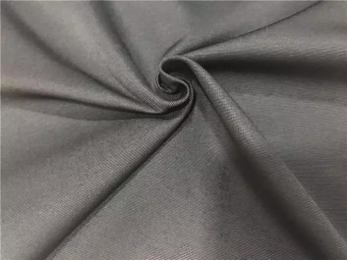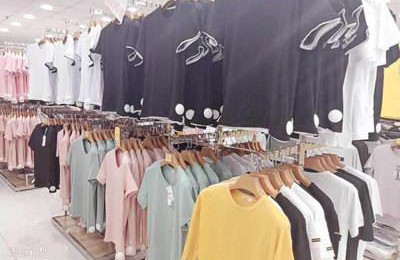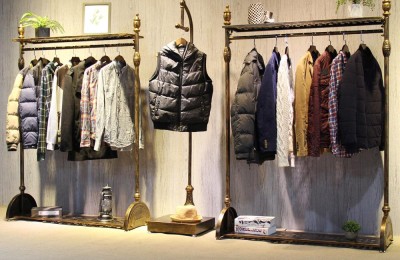International oil prices “jumped up and down”, PTA surged strongly and then fell, ethylene glycol fell sharply after reaching the limit, polyester filament stabilized after rising… In this short week, chemical fiber raw materials The market has experienced a “roller coaster” of tension and excitement!
The upstream raw material market is so “fickle”, so what kind of “situation” is the fabric market facing? The textile market has also reached the middle of the “Golden Nine” period. How have orders and market conditions changed?
1. “Golden Nine” orders have indeed improved, with elastic fabrics and recycled fabrics “taking the lead”
The “Golden Nine” peak season is a critical juncture that textile people have been waiting for for a long time, and this wave of the Golden Nine market has indeed arrived as promised. One truckload of 300T pongee is shipped! 228T polyester Taslan order received for 20,000 meters! A Korean customer placed an order, and it was shipped to Vietnam, and another truckload of fabric was shipped… Various good news such as market shipments were frequent, and weaving manufacturers finally ushered in the state of inventory reduction.
“Although there are many products shipped on the market now, there are only a few varieties that are really hot-selling and profitable.” The textile boss of the machine lamented. “Conventional products such as peach skin and pongee that we produce are mostly marketed as gray cloth, and the finished products are sold in countries such as South America and Bangladesh. They are all based on sales volume and profit margins are generally low. But we Some companies produce recycled environmentally friendly fabrics, but their “gold content” is completely different. Compared with conventional fabrics, the price of recycled environmentally friendly fabrics is 50% higher for gray fabrics and 80% higher for finished fabrics. Moreover, the order volume for this type of fabrics is relatively large. We have recently completed a purchase of 300,000 meters of matte recycled peach skin fabric, and subsequent new orders have also begun testing.”
Ofcourse,inadditiontorecycledfabrics,elasticfabrics,whethertheyareT400,T800orbrokencardfabrics,havetakentheleadinthefabricmarketinrecentmonths.Themarketperformanceisparticularlyoutstanding.
“T400isdefinitelythemainstreamproductamongstretchfabrics,amongwhich‘GloryoftheKing’isparticularlypopular.”Mr.He,atrader,said,“Ofcourse,thenewlydevelopedT800fabricthisyearisnotsuitableeither.Ignore.T800isanewtypeofelasticfabricmadeofhighelasticfiber.ItisimprovedonthebasisofT400.IthasbetterelasticitythanT400andhashighermarketacceptance.Wenowneedtoqueueupwhenpurchasingfromgrayfabricfactories.Goods,youcanimaginehowpopulartheyare.”

2. The polyester industry chain is “noisy”, but the weaving market is “calm”
What I have to mention here is that the raw material market has been like a “roller coaster” in recent times! Affected by the sharp rise and fall in international oil prices, polyester raw materials such as PTA and ethylene glycol also jumped up and down. Similarly, the polyester filament market also fluctuated frequently. Mainstream polyester manufacturers showed a steady rise in the market for two consecutive trading days on the 16th and 17th, with the average daily increase of mainstream manufacturers reaching the level of 50-150 yuan/ton; the price focus of each product has washed away the low price for nearly more than a month, and prices have rebounded. to mid-to-late July.
The polyester industry chain is in a “hustle and bustle”, but weaving manufacturers are indeed very calm about this!
On September 15th, the incident in Saudi Arabia had just happened, and the production and sales of polyester yarn had reached around 120%;
September 16th , international oil prices skyrocketed, and polyester yarn production and sales suddenly rose to 270%;
On September 17, polyester raw material prices were still rising, but polyester yarn production and sales fell back to 90%;
On September 18, oil prices fell, polyester raw material prices plummeted, and polyester yarn production and sales were only 30-40%.
It can be seen that the real “explosion” of production and sales was only on September 16, and production and sales quickly fell back after that.
“With this wave of raw material changes, we purchased some more raw materials on the 16th, and we basically plan to purchase them as needed. The current stocking time in the factory is about 30-45 days,” said the owner of nearly Mr. Bao, the textile boss with 600 looms, said, “I am still cautious about purchasing raw materials. The main reason is that I dare not and cannot. On the one hand, I do not dare to stock up on raw materials in large quantities due to financial pressure. On the other hand, I do not dare to stock up on raw materials. Due to the consideration of the market situation. Unless there is a big market situation, but the possibility is unlikely, it is more reliable to purchase raw materials flexibly.”
3. There is still a gap in the textile market year-on-year, and the domestic sales market is better than that of foreign orders
Compared with the dull market in July and August Generally speaking, the “Golden Nine” market has indeed given textile people a shot of “stimulant”; but it is not difficult to find that compared with the previous two years, the current textile market situationThere are indeed some problems and gaps.
“Autumn quick orders and winter orders are about to end, and the market has begun We are fully preparing for winter quick turnaround orders and next spring and summer orders. At present, the improvement of the domestic sales market is still greater than that of the foreign trade market. In terms of foreign trade, the impact of the increased tariffs imposed by the United States on the domestic textile and apparel industry chain is still relatively large, and the growth rate of domestic foreign trade orders for fabrics It’s relatively slow.” Mr. Chen, who has been engaged in textile trade in Shengze for many years, said. “The impact of Sino-US trade relations and exchange rate fluctuations on this year’s foreign trade market orders cannot be ignored.”
In addition to external factors, the textile market this year is not as good as the previous two years. A large part of the reason why it is so hot is that the weaving market itself has overcapacity.
“Since this year, the concentrated release of peripheral water-jet loom production capacity has entered a stage of rapid growth. The change in production capacity has affected the supply and demand pattern of the gray fabric market, especially the entry of conventional chemical fiber product production capacity. The “blowout period” will have a greater impact on our weaving manufacturers.” Mr. Chen, who owns nearly a hundred looms in Shengze area, said helplessly. “Although in the recent period, the sales of gray fabrics have been good, which has alleviated the early backlog of inventory. However, if the subsequent terminal demand is not followed up enough or the market supply is still increasing, and the problem of overcapacity has not been fundamentally solved, then once the demand decline, the impact of gray cloth weaving manufacturers will hit again.”
Whether it is a trading company or a weaving manufacturer, for Silver Ten There are still certain expectations; however, most manufacturers will choose to arrange holidays during the National Day, which to a certain extent will alleviate inventory pressure and some uncertainty about orders. Generally speaking, I hope that the “Golden Nine and Silver Ten” textile market can keep the market from being too bad and give textile people some hope and expectations! </p





